|
By Los Alamos Reporter BY JOHN RAMON VIGIL Mayor City of Española The debate over banning single-use plastic bags is not just a matter of environmental concern—it’s a practical, necessary step to combat the growing litter issue in our Valley. A significant portion of this litter is caused by the unhoused and unsheltered population, who often use these bags for temporary shelter or bedding. While this is understandable given their circumstances, the unfortunate result is that our streets, parks, and neighborhoods are becoming overwhelmed with discarded plastic bags, contributing to an already rampant trash problem. What’s especially disheartening is that many of the opponents of this ban—some of whom are members or former members of our City’s Governing Body—have never actively participated in community cleanups. They fail to see firsthand the accumulation of trash that those of us involved in these efforts witness daily. It’s a case of “out of sight, out of mind.” These officials may claim to have the best interests of the community at heart, but their lack of involvement shows a disconnect between their political stance and the reality of what’s happening in our neighborhoods. Their failure to realize and discuss initiatives like the single-use plastic bag ban demonstrates a lack of understanding of the very real impact litter has on property values, public spaces, and the overall beautification of our Valley. Just recently the city manager and I took a cruise through Santo Niño and discovered a multitude of smaller encampments from the unhoused population set up on the traditional lands of Santa Clara Pueblo. The massive amount of trash found was plastic bags that the unhoused population uses to carry their belongings around. As public servants, it is our duty to be in touch with the community we serve—not just from behind the desk but by actively engaging in efforts to improve it. The trash and refuse that build up in areas away from the main roads go unseen by those who never take the time to explore the less visible parts of our city. But for those of us who participate in cleanups or live in these areas, the effects are completely undeniable. Our streets are littered with so much trash and refuse primarily caused by the unhoused population, affecting not only the aesthetic value but also the environmental health and safety of our neighborhoods.
Opponents of the ban argue that it’s an unnecessary restriction, or worse, that it punishes individuals who need access to inexpensive bags. But this argument overlooks the larger issue. This isn’t just about making life a little less convenient; it’s about taking a meaningful step toward addressing the growing trash problem that’s affecting everyone. It’s not about adding a tax or creating another hurdle for residents. It’s about removing a major source of litter that’s polluting our community and dragging down its appearance and value. We need to take action, not sit idly by while the issue worsens.
3 Comments
By Zach Hively Any Minute Now I can think of no human creation as ungodly as the waiting room. And yes, I considered the iron maiden, but I ruled it out because, in one of those, you at least know with certainty you’re not going anywhere. I also considered the guillotine—the worst part of which is waiting your turn. This, kiddos, is how revolutionary France invented the concept of the waiting room. The idea of a room itself is not so vile. Dining rooms are delicious, and mud gets its very own tiny room. It’s the room modifiers that make or break a room. Waiting itself is not so terrible either. Some kind of thing comes to those who wait, but I’m too impatient to look up what it is. I am certain, however, that my ancient ancestors waited for days, sharp sticks in hand, for a wooly sloth to wander by, or a particularly delectable-smelling neighbor. Waiting is in my lineage. But the modern world has messed up this genetic mastery. My ancestors waited for something. To spring into action, or to invent sharpened rocks, or to die of old age at twenty-seven. In a modern waiting room, oh let’s just say hypothetically the one I’m sitting in now, one waits simply to be called into another room where one will finally—I swear this is true—continue waiting, but in a more uncomfortable chair. In this liminal space, a man—oh let’s just say, hypothetically, me—loses all sense of his life’s passions, his personal interests, even his bodily autonomy. He cannot remain alert for anything, like his ancestors primed him to do, because the environment is strictly anesthetized to remove thought-provoking stimulus, lest someone wander in and decide to stay forever. He also cannot create any amusement to occupy his mind or assuage his heart or relieve his bladder, because the moment he does, Someone Important will call him in, and he will miss it, and then he must start the whole waiting process all over again, with the added bonus of admitting to an underpaid staff member that he failed to hear the sound of his own name. (Incidentally, I believe this is why the United States of America abandoned the railroad for the automobile. What is a train depot but a waiting room, or an Amtrak but a waiting room behind schedule? Airports and airplanes are the same deal, no different, but there we at least hold a non-zero chance at peanuts.) I did not anticipate waiting in this particular waiting room, at this particular moment. Silly me, I failed to bring peanuts or any other snacks. So with nothing better to chew on, I am stuck contemplating mortality.
There is no priest on hand here to weigh in on the matter. Thus, all on my own, I have come to suspect that the primary distinction between Limbo and Purgatory—the godliest of all the ungodly waiting rooms—is the volume of their TVs. I used to think that a special threshold of hell was a waiting room TV with the volume on. The waiting room never shows the show you want to watch. It shows programs like The Best of Last Week on The Price Is Right, or CNN: Ten-Minute-Loop Edition. And the volume is never subtle. The audio is engineered to drown out the complaints of people being upsold on their oil change, or learning that their airline has been canceled. I no longer think, as of about ten minutes ago, that this is the definition of hell. This particular waiting room is quiet. Too quiet. About eleven minutes ago, I figured out the quiet is coming from the television. It’s showing a marathon of “Little House on the Prairie,” and while I appreciate the silence, I cannot fathom why they even have a TV showing “Little House on the Prairie” when there are so many home shopping channels that deserve to be muted instead. A too-loud TV, and a too-quiet one. One of these is meant to make us atone for our sins; the other is meant to punish us for all eternity. That’s presuming we even have souls anymore, once we enter a waiting room, a truth about which I am increasingly uncertain. I have been in an underground crypt with more vivacity than the assemblage of other people here with me. I’m dying to strike up a conversation with one of them, any of them, just to pass the time and verify they are actually breathing. But you don’t talk with strangers in a waiting room. As soon as you strike up a decent chat, they call for someone named “Jack Lively,” and you just know your name will be next. ~Moving Arts
Espanola, NM – Moving Arts Española is excited to announce the launch of the Mars Odyssey Project, an innovative initiative designed to revolutionize Science, Technology, Engineering, and Mathematics (STEM) education with a special focus on cybersecurity. This groundbreaking project will be integrated into the Mathematics, Engineering, Science, Achievement (MESA) classes at Española Valley High School (EVHS), providing students with a dynamic and engaging learning platform. Mars Odyssey is not just another educational program; it’s an immersive experience that brings STEM to life through the power of gamification. By incorporating hands-on activities with both software and hardware commonly used in today’s industry, the project aims to ignite students' interest in topics such as programming, web design, security best practices, 3D printing, and more. The interactive nature of the program ensures that learning is both fun and meaningful, bridging the gap between theoretical knowledge and practical application. The project includes a dedicated team of professionals including high school interns, NNMC college students, recent graduates, and seasoned professionals. This project structure provides valuable work based learning experiences, near peer support, and professional mentorship to aspiring STEAM students. Leading the implementation of the Mars Odyssey Project in the schools for Moving Arts is Christopher Maestas, a versatile member of Moving Arts Española, who also teaches Hip Hop and Gymnastics and manages Light and Sound, among other roles. Christopher, who holds a bachelor’s degree in Information Technology and Engineering from Northern New Mexico College, brings his expertise and passion for technology to this initiative, eager to inspire and educate local youth. He will work in collaboration with the MESA teachers at EVHS–Lyne Salero and Janice Badongen Patel-e to bring the project to life in the classroom. A key component of Mars Odyssey is its emphasis on cybersecurity. Students will be introduced to the potential dangers associated with various technologies and software, gaining essential skills in handling and protecting Personal Identifying Information (PII) and Sensitive Personal Identifying Information (SPII). This knowledge is crucial in today’s digital age, equipping students with the tools they need to safeguard their data in any future pursuit. The project’s first beta test, conducted in mid-July, was a resounding success. The positive feedback from participating teens has reaffirmed the project's approach and provided valuable insights for further refinement. As a result, the Mars Odyssey team is now preparing to deploy the first full iteration of the project at EVHS on October 10th, 2024 which means students get to play. With their feedback the Mars Odyssey game will continue to adapt and new challenges will be created. “We are thrilled to see our students embark on this journey, exploring the fascinating world of STEM and cybersecurity through a lens of adventure and discovery,” said Christopher Maestas. This exciting new educational experience is made possible through the generous funding from the Google Kids Initiative and the New Mexico Community Trust Technological Grant. Their support enables the Mars Odyssey Project to expand its reach and impact, bringing cutting-edge STEM education to the students of Española Valley High School. Stay tuned for more updates as we continue to develop and grow this groundbreaking initiative! For more information about the Mars Odyssey Project or to schedule an interview, please contact: Contact: Carmelita Archuleta , Marketing and Communications Coordinator Email: [email protected] Phone: 844-623-2787 Victims, police expert among those who can testify in 2023 Oñate shooting trial, judge rules10/3/2024 Trial judge resolves evidence and testimony disputes one week before trial is scheduled to begin By: Austin Fisher Source NM A judge on Monday afternoon set guardrails around certain evidence and witness testimony in the upcoming attempted murder trial of a man who shot a climate activist at a protest over a controversial monument in northern New Mexico.
First Judicial District Court Judge Jason Lidyard ruled on five disputes between state prosecutors and defense attorneys for Ryan Martinez. Video shows Martinez repeatedly trying to rush into an area outside the County Commission chambers in Española in September 2023 where around 50 people were peacefully celebrating officials’ decision to postpone resurrecting a statue of genocidal Spanish conquistador Juan de Oñate. Martinez shot Jacob Johns, a Hopi, Akimel O’odham activist from Washington, once in the chest, according to the footage. Martinez is accused of then turning the gun on Malaya Peixinho. The gun jammed, the video shows, and Martinez fled the scene. Attorneys on both sides told Lidyard they’ve been working around the clock to prepare for the trial, which begins on Monday and is expected to conclude two weeks later. Martinez, 24, has been held in the Rio Arriba County jail in Tierra Amarilla for nearly a year awaiting trial. On Monday and at prior hearings, he could be seen attending via video link, waving to his mother Lita Martinez, holding his hand over his heart and carrying a miniature U.S. Constitution in the breast pocket of his jail uniform. Victims can testify about their injuries. Martinez’s lawyers asked the judge to prohibit Johns and Peixinho from testifying about their injuries from the shooting. Lidyard ruled Johns and Peixinho can testify about their injuries and medical treatment. When the sides argued the issue at a hearing on Sept. 26, Marshall Ray, one of Martinez’s two defense attorneys, said the evidence of Johns’ “pain and suffering” after the shooting cannot be tied to his client’s intentions as it was happening. To prove the attempted first-degree murder charge, prosecutors will have to convince the jury that Martinez intended to kill Johns when he shot him. Ray argued “those after-effects can’t possibly be relevant to intent.” Lidyard said at the time that many people probably have common knowledge that getting shot at close range in the chest has the potential for serious harm, and Johns could testify as a matter of fact that “the injuries that he sustained could have killed him, but for the treatment he received, and his recovery.” Then on Monday, Lidyard said without being in the trial, he can’t specifically say what is or isn’t admissible from the victims’ testimony, but he believes Johns’ “pain and suffering” would not be relevant. “He may discuss the injuries he sustained, the prognosis of him recovering from those injuries, and the treatment he received and the amount of time it took him to recover, but as to pain and suffering, the court cannot see what the relevance would be,” Lidyard said. If the defense believes prosecutors cross a line in their questioning the victims, Lidyard said he expects them to object. Police use-of-force expert can testify. Prosecutors wanted to limit or entirely exclude former Albuquerque police officer Damon Fay from the trial, arguing that his testimony would confuse the jury because use of force by private citizens like Martinez is different from use of force by police. Lidyard ruled Fay can give his expert opinion about the requirements to obtain a concealed carry license, which are relevant because Martinez had a concealed carry license and a concealed firearm when the shooting happened. Lidyard also said he believes Fay can testify about things relevant to self-defense, and specifically whether “a danger of death or great bodily harm was presented to Mr. Martinez.” However, Lidyard said he will not allow Fay “to invade the province of the jury,” meaning it’s the jury’s job — not his — to determine the facts of the case. Lidyard said he “has great concerns that may happen.” For example, a question like, “Would a reasonable person in the same circumstances of Mr. Ryan Martinez have done the same thing?” would invade the province of the jury, Lidyard said. “The court will rely on the state to make objections as they see fit to ensure that that does not occur,” Lidyard said. An independent expert previously told Source New Mexico the rules governing self-defense deal with how a reasonable person on the street would perceive and react to the situation, and not what a trained police professional would do. Late-arriving witnesses can testify Martinez’s defense attorneys asked the judge to prohibit the jury from hearing from anyone who was not already made available for pre-trial interviews, which allow a defendant to investigate their case before going to trial. Lidyard ruled that even though prosecutors did not make some of their witnesses available for pre-trial interviews, there are three who can still testify. They include James Mayer, an Española police detective who handled the crime scene evidence, and Richard Miskimmins and David Wachter, two doctors who helped treat Johns’ wounds. Prosecutors had good reason not to name the two doctors previously, because the primary treating physicians when the shooting happened are unable to testify, Lidyard said. One moved to another country and the other no longer works at the University of New Mexico Hospital, Chief Deputy District Attorney Anthony Long previously said. Lidyard ordered Long to make the doctors available for pre-trial interviews before the trial begins. Attorney in civil cases must also testify. Mariel Nanasi is an attorney representing Johns and Peixinho in possible civil rights and tort claims. Martinez’s lawyers issued a subpoena to Nanasi, calling on her to testify. Nanasi asked the court to quash the subpoena. On Monday, Nanasi argued the subpoena would only harm her clients by having the effect of making her a witness, and therefore prohibiting her from speaking to them while the case is pending. She said she attended the protest but did not see the moment Martinez fired his gun. She said Martinez’s lawyers could have gotten the same facts from a number of other witnesses. However, Lidyard ruled she must honor the subpoena. The exact reason remains unclear, because criminal defendants are not required to “show their hand” before a trial begins. For a little less than 10 minutes, Lidyard met privately with Martinez’s lawyers so they could freely tell him why they are calling Nanasi to testify. When they returned to the public hearing, Lidyard said the defense’s reasons for calling Nanasi “are material to their case,” and she has “exclusive” testimony that’s enough to deny her motion. Some evidence, testimony irrelevant. Prosecutors wanted to call Jimmy Creed, Martinez’s parents’ neighbor in Cedar Crest, New Mexico, to tell the jury about an incident involving Martinez in the months leading up to the shooting. They also wanted to show the jury items found in Martinez’s bedroom by State Police investigators after the shooting. Lidyard ruled that Creed cannot testify, and items investigators found in Martinez’s bedroom are irrelevant, because Martinez didn’t take any of the items to Española. “All of these items remained at his residence and were not utilized in any fashion during the course of the events for which this case is associated,” Lidyard said. The evidence would only be admissible if Martinez’s defense somehow “opens the door” to it, Lidyard said. By Zach Hively Here comes Studio Tour season. It's October, which around here means it’s time for our most hallowed annual tradition—cramming to get ready for the Abiquiú Studio Tour. For some, this tradition means taking time to affix some final price tags to finished pieces and getting some good sleep leading up to the Tour itself. But for the rest of us who aren’t that one person, it means creating a year’s worth of high-quality art in eleven days. Or, sometimes, learning a new artisan trade in those eleven days. This time, for me, looks like assessing if I can still write an entire book of poetry and get it printed without paying some exorbitant expedited rate. Even I can’t speed up that fast. So, this time of year instead means I get to slow down. And why not? I spend 50.5 weeks a year on the computer, where I can look up information any time I want, even and especially if it is irrelevant to the work I’m meant to be doing. I don’t get a lot done, but I get it not done at ludicrously fast speeds, so long as the local internet is working. So when the leaves are changing, I get to shelve my computer and my ambition for the last ten or, if we’re honest, four days before Studio Tour. And I lug out my trusty Royal typewriter. I introduced the Royal to my poetry process many years ago. You see, I feel not quite right when I try drafting poetry on a computer. There’s an alchemy to creating something physical; also, it’s really tough to niggle over a comma placement on a typewritten page, or to check baseball scores. So! I type poems on actual paper, and I check baseball scores on my phone without even having to open a new browser tab. But you know what? There’s something else special about words typewritten by hand, something I learned when I framed poems for my first-ever Abiquiú Studio Tour, and that is this: People will pay actual money for them. This is rare in the poetry world. Everyone from my parents to my poetry teachers has warned me never to anticipate significant financial windfall from my work, or any financial windfall at all. I cannot mass produce these hand-crafted poems, much as my bank account might like me to. I’m stuck going as slow as I can one-finger type. And that’s okay—because this way, studio tourists might have some leftover funds for all the other magnificent artists involved.
Besides, it feels really good to be using my hands for more than computer work again. I hope I remember this feeling the next time October rolls around without warning, as it so often does. Why Does This Matter?
Well, let’s put it in perspective. There’s over $7 trillion currently parked in Money Market funds. Yes, trillion—with a "T." That’s a mountain of cash just waiting to move. Now, obviously, not all of it will budge. People still need some "rainy day" money (you know, for when your roof starts leaking). But $7 trillion? That’s a lot of "just in case" cash! Where Will This Money Go? Some of that cash is bound to head toward higher-yielding investments—bonds and high dividend-paying stocks. It’s like trading in a Camry for a Range Rover. You’re still going to get from point A to B, but now you’re doing it for real. Utilities are a great example here: solid companies paying steady dividends, like the dependable but slightly boring cousin of the stock world. And let’s not forget bonds. If you grabbed high-quality bonds before rates started falling, you're living the dream with higher interest payments and price appreciation. It’s like you bought a house before the market went crazy—now, not only are you sitting pretty, but you can tell all your friends how smart you are. But here's the interesting part—I think a big chunk of this money is going to head straight for growth stocks. Tech stocks, industrials, consumer goods. It’s like the money is saying, "Hey, I’ve had my sensible phase, now let’s get really serious!" What Does This Mean for Markets? For the stock and bond markets, it means there’s going to be a flood of cash rolling in over the next year or two. Think of it like the tide coming in—good for the beach, good for returns, and definitely good for those of us who like to sit back and watch our portfolios grow. Of course, let’s not get too carried away. Life has a way of throwing in surprises—those lovely "Black Swan" events (thanks for nothing, 2008!). So, maybe don’t throw all your money into the mix. There are still plenty of conservative options that won’t keep you up at night. But if you’re smart, thoughtful, and maybe just a little lucky, this shift could be a golden opportunity. Got financial questions? Send them to Peter J. Nagle at [email protected]. On the 4th, 5th, and 6th of October Dar al Islam will host a unique retreat on the spiritual power and beauty of the Arabic script. Music for the Eyes is an effort of the Reed Society for the Sacred Arts, which hosts workshops, exhibitions, and events in the Washington DC area, and the West African Calligraphy Institute, which focuses on intercultural exchange in the US and calligraphy education in Senegal, West Africa. The goal of this collaboration is to explore the diversity of the calligraphic form, to learn from practitioners, and to nurture a growing community of people who seek to increase human understanding and compassion through artistic expression. But first comes the word…
Arabic calligraphy as practiced around the world transcends the simple act of writing. As one early writer said of calligraphy, “If it was a flower, it would be a rose, if a metal, gold.” Another said, “The pen is the ambassador of intelligence, the messenger of thought, and interpreter for the mind.” This spiritual and artistic practice imbues the written word with life and beauty, so both the calligrapher and viewer alike may begin to embody the words and letters, their expression, and ultimately their meanings. What earlier appreciation for this practice has failed to fully embrace is that all throughout the world the richness of Islamic calligraphy has flourished, in different regions that are both at the center and the periphery of Islam, with different schools finding their roots in the spirituality and the unique practice of Islam in each region. One of the goals of the West African Calligraphy Institute is to introduce Americans to some of these unique regional practices. Islam has been in Senegal since the 11th century, and although it has been largely unstudied and marginalized, West African calligraphy has developed its own distinct style. In fact, much of the history of the region from the 11th-17th centuries was written in the Wolof language using Arabic script - a practice that is generally referred to as Ajaami, and locally named Wolofal. Today 90% of Senegalese are Muslim and belong to one of a few Sufi brotherhoods, where scholarship, poetry, and art continue to enrich and preserve their particular form of Arabic calligraphy. Through West African Arabic calligraphy, the Institute’s goal is to share the culture of West African Sufism, centering education, hard work, non-violence, and community building. Likewise, the Reed Society for the Sacred Arts has been working for years building a community of calligraphers and teachers from across the country and across the Atlantic. Esteemed member of the Reed Society and master in the classical school of Arabic calligraphy, Nuria Garcia Masip will be on-site in October guiding calligraphers and sharing her knowledge of the practice. Also, Franco-Iranian artist Bahman Panahi will be giving a workshop on technique and his concept of of musicalligraphy. Over the course of the three days of the retreat, all three styles and inspirations will come together to create a beautiful symphony of line, form, and spirituality. We hope to see you there!
By Jessica Rath
When you think of books and art, you might think of Nobel-prize winning authors such as John Steinbeck or Thomas Mann, or of books of poetry where every word is carefully crafted and positioned. But one rarely thinks of the physical book itself – the paper, or the way the words are printed. Not so for long-time Abiquiú resident Pam Smith: she belongs to a relatively small group of people who dedicate their art to the way the book looks. Everything is done by hand: the printing, the binding, even the paper. Together with six other individuals, Pam has been selected for the 2024 Governor’s Awards for Excellence in the Arts. She will receive the prestigious award for 28 years working as founding director of the Press of the Palace of the Governors, for her career as curator, educator, and award-winning book designer/letterpress printer, and as proprietress of the widely recognized MarbleSmith Papers which she started over 50 years ago. The awards ceremony will be held on Thursday, Oct. 10, 5:00 pm, at the St. Francis Auditorium at New Mexico Museum of Art. Pam grew up in a small town in Illinois, got her degree in journalism from the University of Illinois, and then lived in Chicago for several years. Some of her friends were seriously interested in Southwestern Art and had opened one of the very first Native American art stores in the city. When one of the buyers invited her to come along to Santa Fe for Indian Market, Pam agreed and enjoyed her time in New Mexico so much that she decided to relocate there. That was in 1972! For 15 years she lived in Santa Fe, and in 1989 she moved to Abiquiú. I don’t know many Anglos who have lived here for that long.
While in college, Pam took a class about letterpress printing, at a time when newspapers and other print media had turned to offset printing. She loved everything about it because it is done manually – exactly as Gutenberg had invented it, almost 600 years ago. Shortly after she had settled in Santa Fe, somebody told her about a job that would soon be available: The New Mexico History Museum wanted to establish a working exhibition of the state’s historic printing equipment and was looking for a person to get this project off the ground. Pam excitedly accepted, started as a volunteer, and soon rose in the ranks to become the director of the Palace Print Shop, as it is known. Within weeks she was producing broadsides, replica newspapers, postal cards featuring historic photographs, notecards embellished with ancient pottery designs and even Governor Bruce King’s Christmas cards. Each of the 500 cards was hand-fed into the jaws of a 19th century treadle and hand-operated press. But most importantly, she launched a limited edition publishing program with books focusing on New Mexico history and printed on the historic New Mexico presses. They won awards and garnered national attention.
With a passion for teaching her skills, Pam gave workshops on hand bookbinding, illustrative techniques, paper marbling and printing for both adults and children. She also traveled with the Van of Enchantment, a Museum outreach program that took book arts into classrooms and libraries throughout the state. She continued the work until her retirement in 2001.
Pam briefly explained letterpress printing to me: “Each raised character sits on a single metal piece. The letters are stored in a configured box known as a California Job Case. Like typewriter keys, the case layout facilitates the hand selection of characters. In turn, each character is placed in a hand held tray known as a composing stick to slowly assemble an entire text block. And so everything is physical about it. At the same time, it’s a creative process: you have to keep the whole project in your mind in order to create something that is pleasing, as well as easy to read". She’s talking about the empty spaces between words: they’re created by metal pieces as well, and the typesetter can choose between different sizes to find the balance between readability and aesthetics.
While she worked at the Print Shop, Pam gave workshops at the Museum about hand bookbinding, illustrative techniques, paper marbling and printing for both adults and children. She also traveled with the Van of Enchantment, a museum outreach program that took book arts into classrooms and libraries throughout the state. It wasn’t only the printing process which intrigued Pam. She took classes in paper making and she went to California to study hand book binding. She explored all the different components and materials that are involved in book making. And when she came across paper marbling, she knew that was what she really wanted to do. Here is how she describes the process: “Marbling is very magical. It's almost like developing a photograph. It's instantaneous: you sprinkle the colors down onto the gel. Then, using combs and small tools, you manipulate the paint into floating patterns. Next, you take a piece of paper pre-treated with a mordant and roll it down onto the surface of the gel. You pick it up, and then there's (hopefully) this beautiful sheet! Right away you run it under water and just like that! There it is: the sheet left to dry”.
Does this process have to be done for each sheet, I wanted to know.
While each print is a unique monotype, parts of the preparation don’t have to be done for each sheet, I learned, but it still takes time. Pam often gets orders for the covers of book editions, which may mean 100s of sheets per order. She once was commissioned to produce an edition of 1,000 sheets and completed the job cranking out 70 sheets a day!
“I would prepare the gel for 70 sheets the night before. It is made out of a seaweed called carrageenan. It is perfectly organic. You have to let it sit overnight. That’s a concentrated form”.
“When I first started, I was reading little children's school pamphlets from England to teach myself the process. And they would tell you that the best water to use in creating the gel is rainwater, because many other waters contain minerals that can disturb the process. Well, rainwater was a bit of a problem in New Mexico!” “I was using actual dried seaweed, as well, boiling it with water and then straining out the residue. Now we use a concentrated form of carrageenan, a powder that is simply blended with water. No muss, no fuss. Much faster and more reliable”, Pam stated. My next question was, How did the people who needed marbled paper find out that you were making those beautiful sheets? “Well, the handmade book world is fairly small”, Pam told me. “There is the Guild of Book Workers (GBW), that's probably the largest organization. They hold an annual Standards of Excellence Conference that I would go to and where I’d sell my papers. It's always held in a different city, and I went to nine of them. Then there are many California private presses. I did a Barry Moser book called “Outside” for the people out there; I worked with a wood engraver who did a book on exotic plants in the Huntington Library Gardens; I have clients from all over the country. There was a Guild meeting in Toronto, and I sold papers there”.
“But the best thing I did: I was invited to go to a conference in Istanbul. Turkey is thought to be one of the earliest, or maybe even the birthplace of the marbling process. From there it gradually spread into Europe, and then to England and then to the United States. But it was in the period from around 1400 to 1500 when this technique first became popular. And in Turkey it is still a vital contemporary art form. This is one of the reasons I was delighted to be recognized for my work as a paper marbler. Unlike Turkey, this country doesn’t really give that kind of status to paper marbling. At the conference, among marblers from all over the world, another American artist came to me in awe. Someone there had asked her for her autograph, an all-time first. Who in this country would ask a paper marbler for their autograph?” Pam laughed as she was telling me this story.
Her passion for this particular art form clearly dominated our conversation. Pam went on:
“It's a very controlled process. People think that for marbling you just throw a little oil paint on water. No, it's all balanced. I work with gouache colors. I don't work with oils. There are very traditional designs that have come down from centuries ago, and they all have names. There's Turkish Stone, there's Large Dutch, there is Getgal. They all have names, and those are very ancient patterns. They are very precise and very graphic, and they inspired me to do more botanical shapes and forms, which really comes out of the Turkish tradition as well. There’s a pattern called Oak Leaf, and I would do different things with the oak leaf pattern”.
“You see, once I established control over the historic patterns, I turned to something more abstract, because then contemporary book binders could use it. Every material used in a handmade book makes a statement about the text. It's all interpretative. And so, when I did something on fly fishing, I made sure that it was watery. There's a thing called French Shell that makes a dot pattern with a halo around it, it almost looks like fish eyes. So I would use that in the whole process”.
Pam’s trip to Turkey and her visit with some of the accomplished marbling artists there confirmed the direction she was already moving toward: to use the process to create more abstract, rather than tightly patterned, papers using alternative tools. She gave me an example:
“Recently I started working with a floral frog, a metal piece you put at the bottom of your vase which has little pinpoints sticking up to which you can attach the flowers. I started using that to dip into my paint and I’m getting this intense dot pattern. That’s what I’m experimenting with right now”.
My final question is about Pam’s clients, current and past. Who orders her marbled creations? It turns out there is quite a range.
“For example, I worked for people who made replicas of 19th-century telescopes, and they wanted marbled paper tubes. I did a lot of paper for them, because they consistently used the same patterns. Then I did work for a store in DC called Bookmakers International; I did a series of 25 different patterns for a little catalog that they sent out. I worked for a company in England, a very old and venerable book material store in England called Shepherd’s. I always thought that was funny, sort of like taking coals to Newcastle, because in England paper marbling has a long history and is much more popular than here”. Pam continued: “And then I worked for various individual private presses all over the country, as I have talked about before. Some were big clients; for example, I did a series of papers for a woman in Texas who did potpourris. She wanted her boxes to be covered with marbled paper, and they all had special themes, Cranberry Whimsy was one, and Ocean was another. So I had to come up with a design that fit the subject matter”. “I even did Wainscoting. It's a wall covering that’s applied to the lower third of a wall. Somebody wanted to use marble paper! And I did reproduction pieces for commercial books. They would reproduce the paper mechanically and use it on their publications. And my latest thing, this May, was to teach a class to 24 students at Ox-Bow School of Art – an art program run by the Chicago Art Institute in Michigan, and that was fabulous. Now that I’m 80 it probably was one of the last things I’ll be doing, to tell you the truth, but it was great!” On top of all these activities, Pam managed to research and write a book: Passions in Print, Private Press Artistry in New Mexico, 1834 - Present. It collects the rich history of private printing and publishing in the state from the nineteenth century to the present. You can find out more about it here. Pam has lived in Abiquiú for about 35 years, but not many people here know about her or have any idea what she does, especially those who moved to the region during the last ten or so years. Paper marbling? I bet many of our readers have never heard of it. And yet, it is an important component of an equally little-known vocation: the art of handmade bookmaking. In a world that is dominated by mass-production, a book which involves an individual’s creativity and sense for beauty at every step is truly something magical. The award ceremony on the 10th of October is open to the public; it begins at 5:00 p.m. at the St. Francis Auditorium at New Mexico Museum of Art. An exhibition of work by the seven 2024 recipients will be on display in the Governor’s Gallery on the fourth floor of the Roundhouse beginning Friday, Oct. 11, with an opening reception from 2:00 – 3:30 p.m. A short film about Pam will be shown during the awards ceremony: “They had a guy come around who spent all day here doing a film in my studio”, Pam told me. If you can, go and attend the award ceremony. You could ask Pam for an autograph – I’m sure she’d be tickled pink! Somehow, it seems fitting that an Abiquiú resident has been chosen for this great honor. It’s amazing how this area keeps attracting not just painters, but other artists with unique and special talents. Thank you, Pam, for a fascinating interview. Although she was one of the first people I met when I moved to Abiquiú in 2000, I had no idea about the extent of her accomplishments. She was always ready to help others, but rarely talked about herself. It’s time she gets the recognition she deserves! In unrelated news... By Zach Hively I’ve just returned home from a distant state, where I spent an unspecified period of time with an undisclosed number of people to mark some major milestone date or other with an unnamed member of this very vague party. That’s it. That’s all I can write. It’s like I said to several of the shall-remain-unidentified people in attendance (because they each suggested I might be loading up on writing fodder at the event in question): No one could anonymize this many people in my family. At least, not all at once—and most definitely not when several of them admitted, privately and quietly, to reading my work. This revelation, that my unnamed family actually reads what I write, is really quite humbling. It’s also seriously terrifying. I don’t even know what I’ve written, let alone what they’ve read. You see, you grow numb, after a while, writing for the newspaper. This field is all about the clicks anymore, and the social media shares—or so I gather. I’d have to actually post to the socials in order to collect hard evidence on the matter. I don’t post, though, because any platform I’ve heard of is already out of fashion with the young people, those the age of my cousins’ and my sisters’ kids, of which there are several more in existence than I realized before counting them all in one place. Even with print editions of the paper, you watch the people waiting for tables in sushi restaurants skip over your hard work and go straight to the horoscopes. It grinds you down. You word count exists to create ad space for yet another pot shop, and that’s that. You submit your pieces, accept that they will light a lot of fires this winter, vote pro-cannabis, and carry on. This system works pretty well for you, until you are surrounded by twenty-seven other people, all with some sort of genetic or matrimonial bond, and you’re overwhelmed by just how much they all look alike except, of course, for you. They tell you you look like your father, but your father is many years older with much shorter hair, so you think maybe they are just being kind to him. Perhaps you actually can write about all this, you think. It’s not like anyone will call you out on it; after all, you’re not even sure they’re listening when they ask you how you’ve been and you talk for the next hour about your dogs. But then, your cousin says something complimentary about reading your work online for several years now. It’s a specific observation, too—not the “You do this writing thing, don’t you?” sort of bid for connection you get from certain, more immediate, family members. She means it. However, you can’t very well write about that, because as soon as you include one of your cousins, you have to include them all. Unless you anonymize them. But you can’t, because you have only two cousins in the bunch, and they talk. And, they read. You now feel you’re being monitored by Big Brother, even though a brother is the only familial relation you don’t have out of the twenty-seven other people at your grandpa’s ninetieth birthday party. You wonder, as soon as you write that, if you just said too much about your grandpa and his age. Too much to protect the privacy of your family (including, most importantly, yourself)? Did you just risk this piece being shared with everyone on your dad’s side of the family? You decide to leave the reference in place. It’s always possible your readers will think you mean the other grandpa on your dad’s side turning ninety this weekend. With thanks, and apologies, to the photographer who must remain uncredited.
That’s where I stand. Despite the plausible deniability, I don’t feel like I can write any of that stuff. Not only because my audience is half a dozen people larger than I ever suspected, but also because it wouldn’t be much fun to base an entire piece on a family function. Sure, family foibles are highly relatable, nearly universal experiences. You’d think we could all connect over ragging on a brother-in-law or equivalent. (Not you! One of the OTHER brothers-in-law.) Practically every family has a paternal aunt who takes on the ludicrous bulk of coordinating twenty-eight people from across the country—on the same weekend, mind you—and welcoming them into her own, actual home. That’s a tie that binds us. And who doesn’t enjoy talking in hushed tones about the long-haired, bearded, childless writerly-type in the family? No one knows quite what to make of him, except to say, “For a hermit, you’re doing pretty well this weekend.” Really, though, I can’t imagine any reader (including my familial ones) wants to relive all their own awkward family experiences. Not when there are plenty of local pot shops to visit. Besides, my family, it turns out, is not half as awkward and strange as I expected. If I did write about them, I wouldn’t even have to anonymize them. But I would, because I cannot remember that many names.  Rio Grande water released from Caballo Dam on June 1, 2022. The water travels downstream for several days to reach the riverbed running through El Paso, Texas. Releases used to come in March or April, but with less water flowing downstream, managers now wait until nearly the middle of the growing season. (Photo by Diana Cervantes for Source NM) The new special master for the Rio Grande water fight between Texas and New Mexico is asking for an update from all the parties in a scheduled Oct. 23 hearing in Denver.
The U.S. Supreme Court appointed a new judge to supervise the case in July, following the high court’s June ruling that dismissed a potential deal to end a decade of litigation between New Mexico and Texas. Special masters act as a trial judge in cases. They decide issues and write reports to inform the U.S. Supreme Court’s ultimate opinions in a case. U.S. Court of Appeals for the Third Circuit Judge D. Brooks Smith, appointed by the Bush administration, ordered the parties on Sept. 9 to present the history of the case and suggest the next steps in the resolution. Whether the case goes to trial or back to the negotiation table remains to be seen. The case is officially called Original No. 141 Texas v. New Mexico and Colorado. Colorado is tangential to the lawsuit. The dispute is primarily between Texas and New Mexico. In a 2013 complaint, Texas alleged that years of pumping in New Mexico below Elephant Butte Reservoir took Rio Grande owed to Texas. That would violate the 85-year-old document — a compact from 1939 — that governs how Rio Grande water is split between Colorado, New Mexico and Texas. The Rio Grande Compact also covers treaty obligations to Mexico, and agreements to provide water to regional irrigation districts. In 2018, the U.S. Supreme Court allowed the federal government to join the case. Justices unanimously accepted the federal government’s arguments that New Mexico groundwater pumping threatened the treaty and irrigation water deliveries. After one half of a trial and nearly a year of negotiations, the states — Colorado, Texas and New Mexico — put forward an eleventh-hour deal to end the lawsuit, which included adding a river gage at the Texas-New Mexico border. Attorneys for the federal government and the regional irrigation districts objected to the deal, arguing it added unfair requirements and was void without their agreement. A previous special master recommended the U.S. Supreme Court accept the states’ deal over the federal government’s objections. But in June, the high court narrowly sided with the federal government rejecting the deal, ruling in a 5-4 opinion that the case should continue. |
Submit your ideas for local feature articles
Profiles Gardening Recipes Observations Birding Essays Hiking AuthorsYou! Archives
July 2025
Categories
All
|
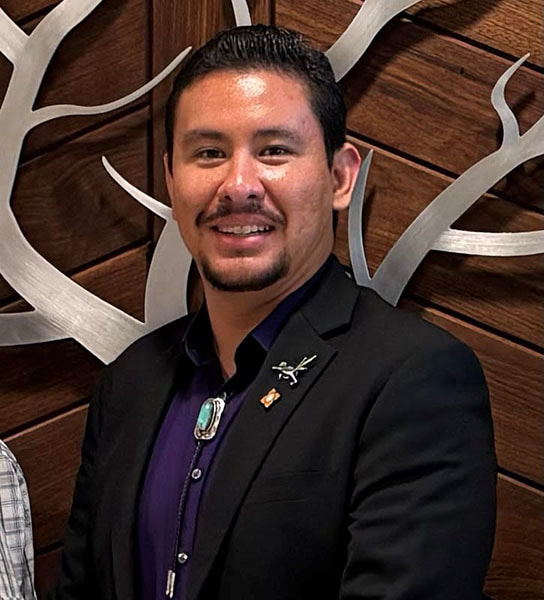



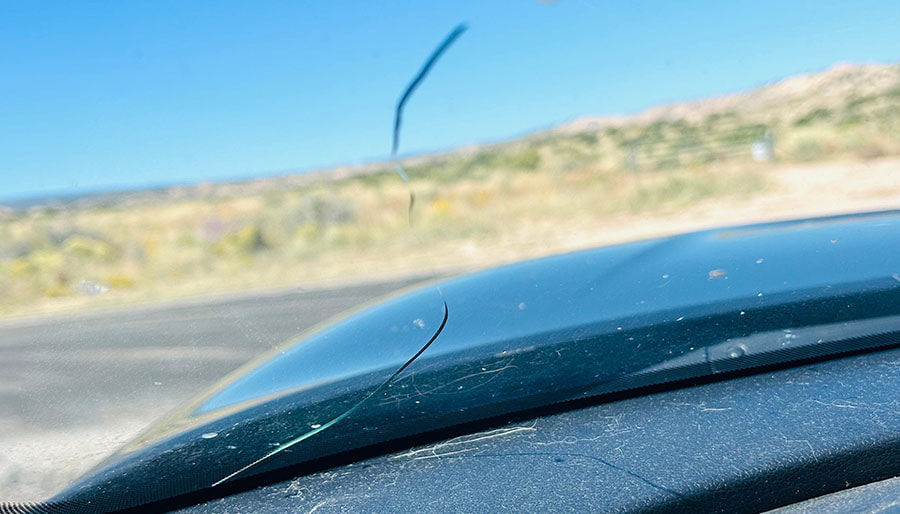

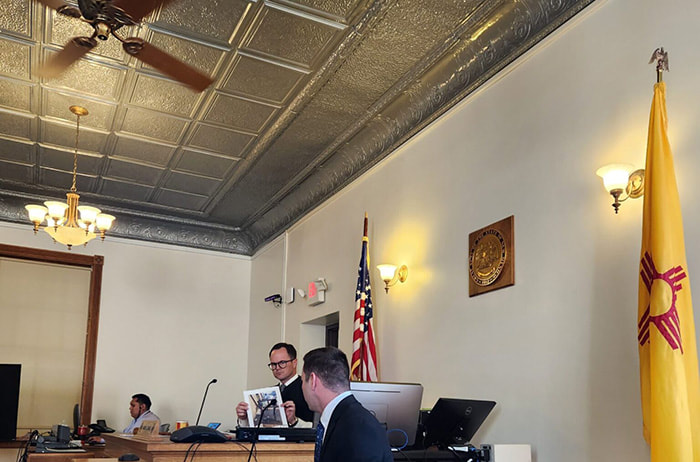








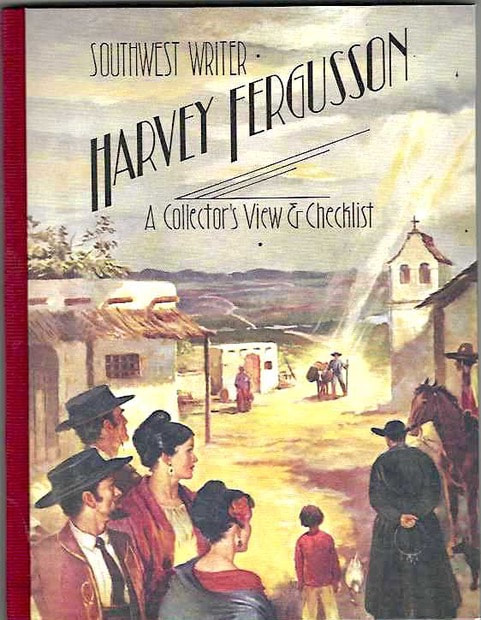
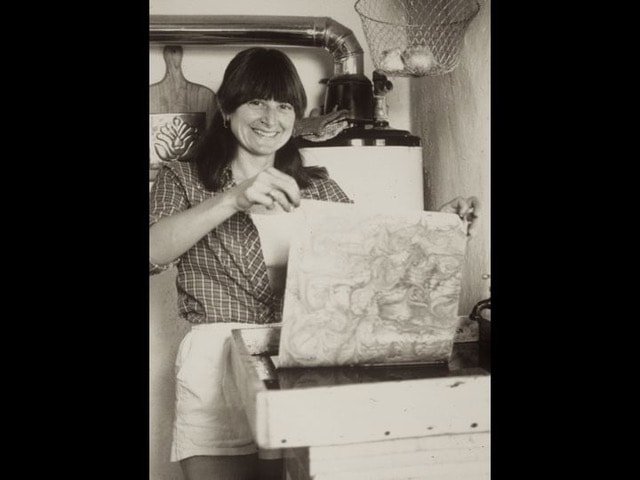


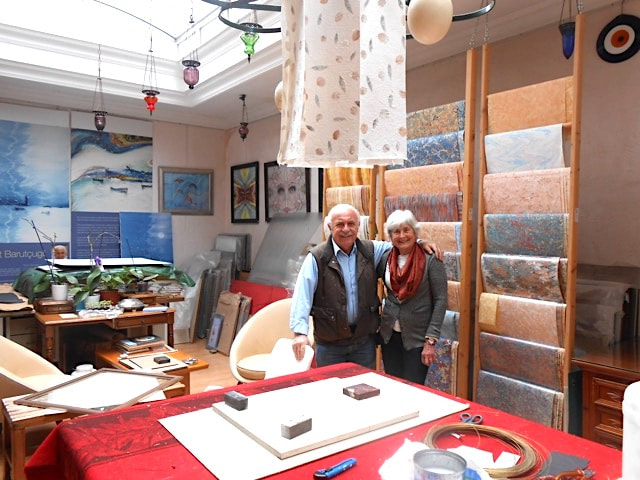






 RSS Feed
RSS Feed